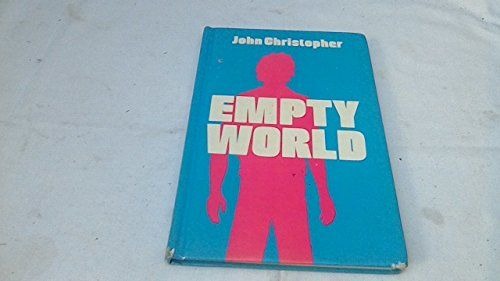
𝗪𝗲'𝗿𝗲 𝗿𝘂𝗻𝗻𝗶𝗻𝗴 𝗼𝘂𝘁 𝗼𝗳 𝗼𝗹𝗱𝗲𝗿 𝗽𝗲𝗼𝗽𝗹𝗲!
John (Tripods) Christopher’s 1977 sci-fi novel Empty World describes planet Earth decimated by the Calcutta Plague, a deadly virus that causes rapid ageing, quickly followed by death (it's not a jolly book). So, most of the older population is wiped out, leaving teenagers and people in their 20s in charge.
Fortunately, in 1977, most of the teens and twenties were Baby Boomers not Millenials. So the world was taken over by self-assured, goal-centric resourceful people with a strong work ethic. Rather than social media-obsessed, financially irresponsible, kidult babies obsessed with going out for brunch and eating avocado on toast. (I'm Gen X, by the way, so my main aim in life is to annoy Millenials.)
But the most fortunate thing (spoilers!) is that the book was a work of fiction (phew). Old people are not dying out. Well, yes they are, but here's the trick: they are being replaced by middle-aged people becoming older people.
Here's how it works: in 2014 I turned 40. Fast forward ten years to 2024 and I turned 50. You may have experienced something similar. What I realised when I turned 50 is that I have a lot more living to do. The only alternative to getting older is not being alive any more. And who wants that?
So, it's strange when charities start chasing a Millennial audience in this day and age. That's because:
• Older people (55+) are more likely to donate than younger people.
• This is due to a combination of biological and cultural factors.
• Older donors are more likely to give repeatedly.
• Successful fundraisers understand and target the motivations of older donors.
(For a fuller explanation read this Moceanic blog: https://lnkd.in/eSM-FaTW - The Fundraiser’s Practical Guide to Older Donors: 3 Things You Need to Know by Jeff Brooks.)
And we are not running out of people becoming older, and becoming donors. They're unstoppable. In 2022 in the UK alone there were 4 million people aged 50-54. Two years later millions of them will now be 55+ and potential donors. Not all of them, just the very best ones.
Of course, it's very important to target Millennials to become donors. But the first Millenials will be aged over 55 in 2037. So let's not rush, eh? Unless there's a plague coming or something. Hang on...
Fortunately, in 1977, most of the teens and twenties were Baby Boomers not Millenials. So the world was taken over by self-assured, goal-centric resourceful people with a strong work ethic. Rather than social media-obsessed, financially irresponsible, kidult babies obsessed with going out for brunch and eating avocado on toast. (I'm Gen X, by the way, so my main aim in life is to annoy Millenials.)
But the most fortunate thing (spoilers!) is that the book was a work of fiction (phew). Old people are not dying out. Well, yes they are, but here's the trick: they are being replaced by middle-aged people becoming older people.
Here's how it works: in 2014 I turned 40. Fast forward ten years to 2024 and I turned 50. You may have experienced something similar. What I realised when I turned 50 is that I have a lot more living to do. The only alternative to getting older is not being alive any more. And who wants that?
So, it's strange when charities start chasing a Millennial audience in this day and age. That's because:
• Older people (55+) are more likely to donate than younger people.
• This is due to a combination of biological and cultural factors.
• Older donors are more likely to give repeatedly.
• Successful fundraisers understand and target the motivations of older donors.
(For a fuller explanation read this Moceanic blog: https://lnkd.in/eSM-FaTW - The Fundraiser’s Practical Guide to Older Donors: 3 Things You Need to Know by Jeff Brooks.)
And we are not running out of people becoming older, and becoming donors. They're unstoppable. In 2022 in the UK alone there were 4 million people aged 50-54. Two years later millions of them will now be 55+ and potential donors. Not all of them, just the very best ones.
Of course, it's very important to target Millennials to become donors. But the first Millenials will be aged over 55 in 2037. So let's not rush, eh? Unless there's a plague coming or something. Hang on...





